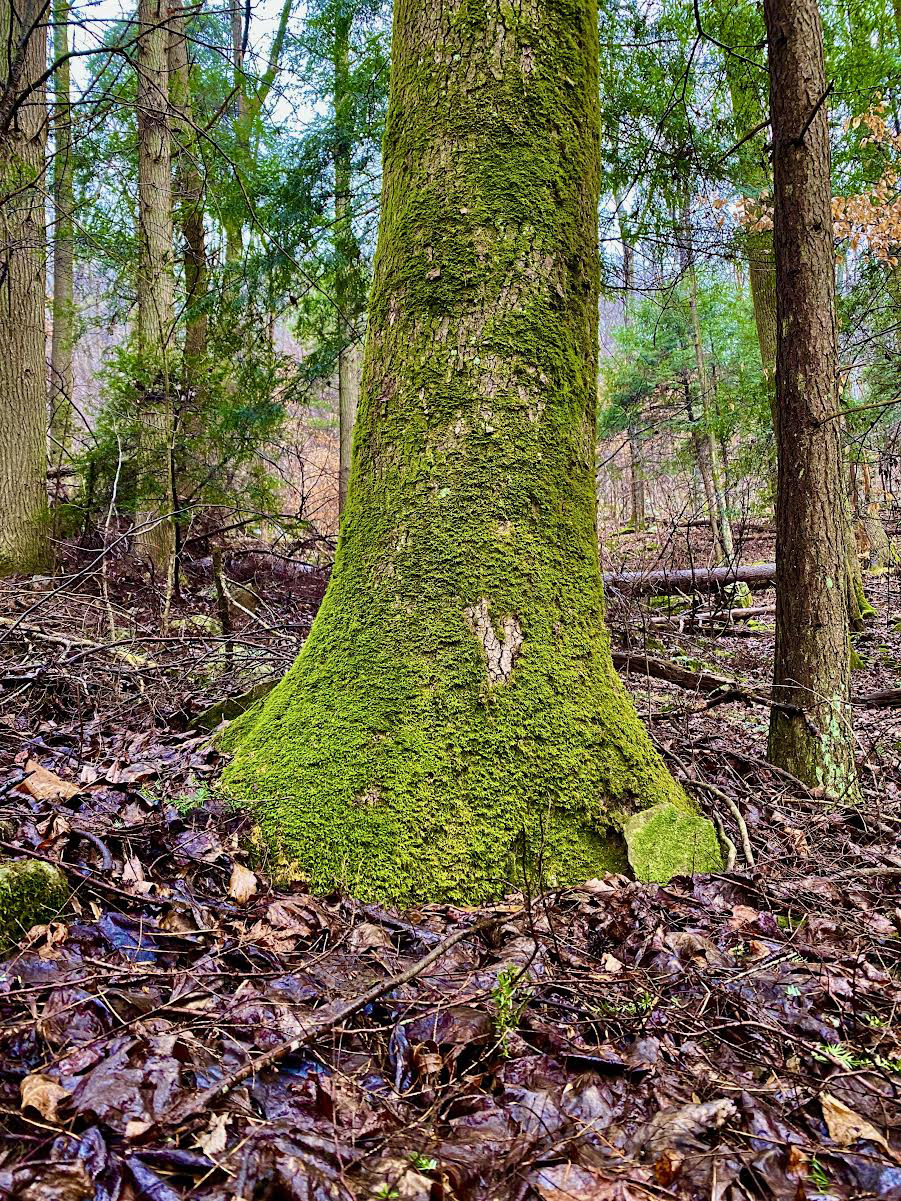Finding your way
Published 2:48 pm Monday, February 20, 2023

- Moss typically grows on the north side of a tree. Photo by Steve Roark
|
Getting your Trinity Audio player ready...
|
BY STEVE ROARK
Contributing columnist
Humans seem to have wanderlust hardwired into their psyche. Our ancestors from countless generations have always moved on to new places. Even in modern times we still yearn for new territory. An average American will live in five homes in a lifetime, and in between we take vacations to see new places. We have the advantage of road maps and high-tech toys like GPS that can tell us exactly where we are and show us how to get to anywhere we wish, but in earlier times direction had to be determined through observing nature.
Before satellites we depended on the Earth’s magnetic core to determine direction. The compass has been around for centuries and points out north to keep us on course. Without a compass one must be more observant to figure out direction. You are familiar with the North Star, Polaris, which stays fixed in the sky while all other stars move. To find Polaris, look for the big dipper, which is easy to find. With your eye extend a line through the outer two stars of its ladle until it crosses a star, and that’s Polaris. Stars in general can be used for direction because they drift from east to west across the sky. Keep your eye on one bright star close to the horizon. If after a while it appears to rise, then you are facing east. If it seems to be falling, you’re facing west.
On a sunny day place a straight stick in the ground in such a way that it casts no shadow (the stick is pointing directly at the sun). Wait until the stick makes a shadow. The end of the shadow is now pointing east. If you have a regular watch (not digital) you can use it as a compass. Place the watch face up, with the hour hand pointing toward the sun. South will be halfway between the hour hand and twelve o’clock.
Other ways to tell direction are not as accurate, but they are better than nothing. There is a moss called tree skirt moss that likes to grow on lower tree trunks. If the tree is away from stream sides and moist places, chances are moss is growing on the north side of the tree where it’s shadier and cooler. If you see a tree stump, its rings will probably be wider on the sunnier side, which is south. Sugar maple is a tree whose trunk often looks like it’s been charred black by a fire. The black is a mold growing where the tree trunk has been bleeding sweet sap from sapsucker (a woodpecker) drilling wounds. The sap flows the more on the warmer side of the tree, so the tree will be blacker on the south side. The very top of a pine tree often points east. Our prevailing winds are from the southwest, so face the wind and west is probably slightly to your right. This only works when no fronts are moving through and changing wind direction.
Sure, it’s easy to find your direction with a smartphone, but it’s still fun to mess around with the old ways. And who knows, it may come in handy sometime.
Steve Roark is a volunteer at Cumberland Gap National Historical Park.





